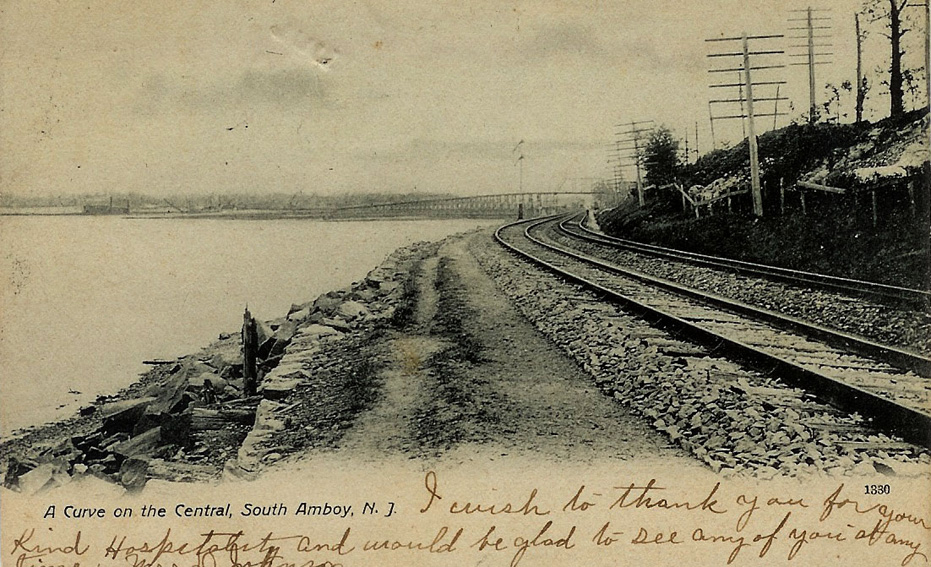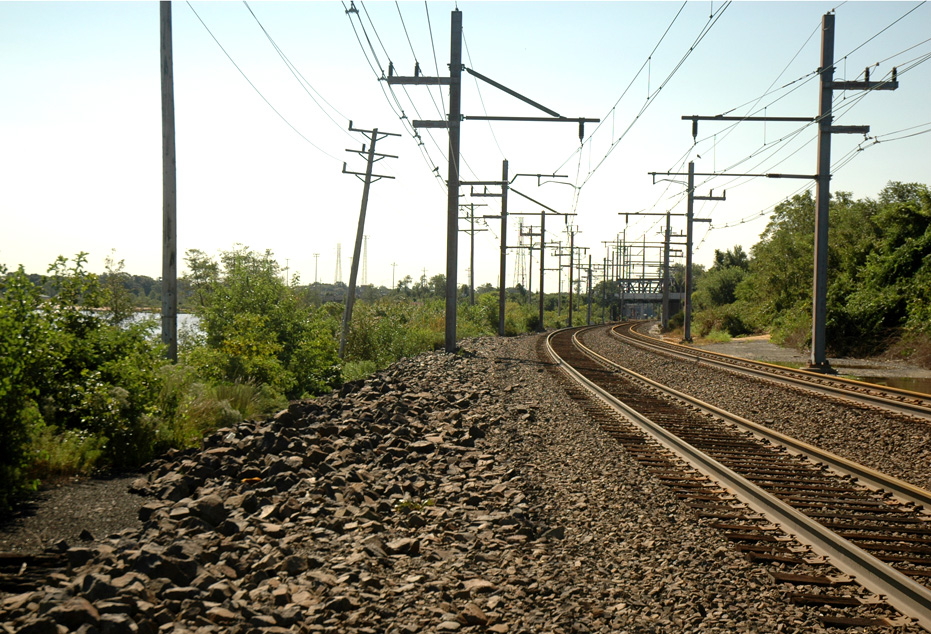Morgan Memories – Then & Now – A Curve on the Central

“A Curve on the Central, South Amboy, N. J.” Picture Post Card, Circa 1907, Courtesy of Joyce Elyea.
Here is a post card, post marked July 12, 1908, which struck pretty close to home for me – literally. It shows the curve of the Central New Jersey railroad in Morgan, NJ, specifically just about in my childhood back yard. Not only does it show the trestle and bridge of the Jersey Central Traction Company trolley line, which ran through Morgan in the early part of the 20th Century, the far left side also appears to show the dredge which did a touch up on the Cheesequake Channel from July 17 to August 21, 1907. According to the 1908 Report of the Chief of Engineers United States Army, the 8,236 cubic yards of “excavated material was dumped on the flats on the west side of the west jetty.”
The below photo is approximately the same location as of 29 August 2011, the day after Hurricane Irene blew through Morgan, some 104 years later. While there wasn’t any damage from Irene, Hurricane Sandy the next year was a different story completely. The soon-to-be-reposted page which discusses some of 2012’s Hurricane Sandy damage to the railroad in Morgan.
Some of the obvious changes between 1907 and 2011 are the catenary overhead wires and poles for this now electrified railroad, the Pratt truss bridge of the north bound lanes of Route 35 crossing over the tracks in the same location where the Jersey Central Trolley Company trestle bridge used to be located, and the extension of the land fill with corresponding vegetation on the bay side of the railroad tracks. I can’t tell, but it also looks like there might be cows or horses on the side of the hill in the 1908 image behind a fence.
If you look very closely on the south bound tracks in the 2011 image, you will see a thin layer of rust which formed on the very top part of the tracks. This was caused by the rare occurrence of trains not running on the tracks for a few days combined with the rain and humidity of the hurricane.
Originally posted on September 14, 2011.
